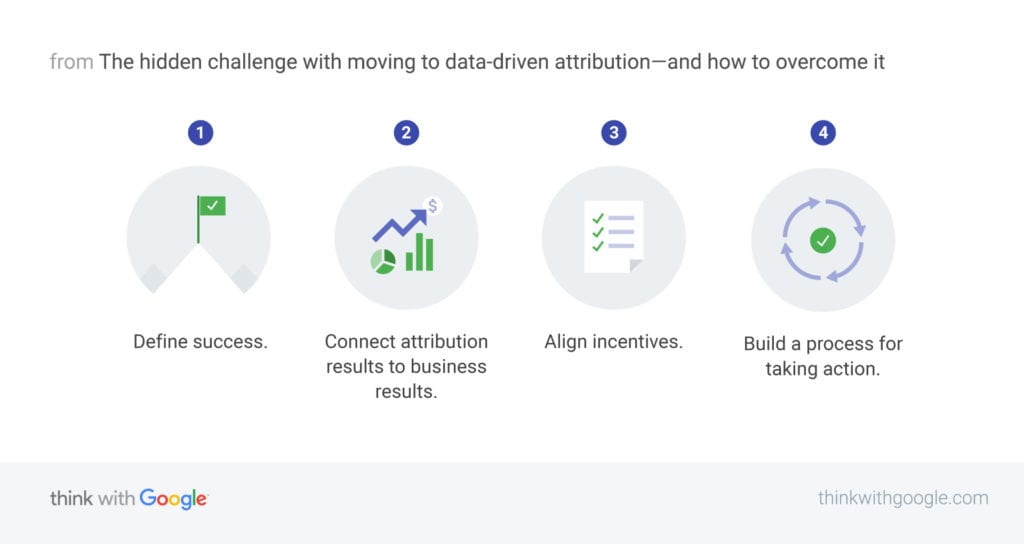
One of my favorite resources for marketing and communications info is ThinkWithGoogle.com. While they tend to be a little overly aggressive with sending emails, every once in awhile there is one that makes me stop. According to a 2017 study, only 17% of advertisers say they are looking at the performance of all their digital channels together.
This statistic didn’t make me pause because it was surprising. In fact, the most surprising thing about is that the number is as high as it is. In the church and nonprofit world, the vast majority of people who say they are looking at all of their channels together are probably organizations with just one channel.
Leveling The (Data) Silos
A few months back I wrote about flattening the communications silos in your church. I even made it an important factor in your hiring process. But if we are to genuinely open up our strategy and flatten our leadership, then we need to open up and flatten the data that informs those leadership decisions.
So why aren’t churches and nonprofits looking at the big picture? Here it is straight from Google:

In my own anecdotal experience, I’ve found that most organizations aren’t looking at the big picture for 3 reasons.
- Lack of Tools or Know-How. For many churches and smaller nonprofits, communications and marketing are the smallest “department.” Often it is a side task given to the youngest member of the staff, or the already overworked secretary. Even in these scenarios that person still has access to the most data and knowledge regarding the effectiveness of the church’s efforts. But they don’t know how to access and analyze that data or they simply don’t have time to.
- Lack of Desire from Leadership. I’ve mentioned before about taking the time to build out fancy, live, always up to date dashboards for clients that put all of their data in one place, easy to access, and easy to use. I’ve never once had a client who was excited about it or even used it regularly. Typically, a client is looking for a monthly brief summary of marketing only related data with marketing only related action items. That is fine, but the fact is, I have access to data that pertains to all aspects of an organization’s strategy. It would be extremely valuable when blended with the church’s own first party data like attendance, donations, member engagement, etc. For some churches, the leadership just isn’t interested in looking at the data from what it perceives to be an unnecessary source.
- Lack of Access to All Channels. This ties in somewhat to the second point, but because organizations prioritize data and knowledge, they also segregate that data and knowledge. What do I mean by that? I mean that churches tend to prioritize attendance and giving. So that data is kept by one gatekeeper. Weekly engagement and ministry through digital channels is seen as a secondary priority. So that data is managed by a secondary gate keeper. The problem is that these data sources are highly connected. They are all points on each member’s journey. Your church or nonprofit should have someone who has and uses access to all digital channels.
How Flatten Your Data Silos
Again, from Google:

The first step is to become an organization dedicated to flattening data silos. The biggest aspect of that is to appoint someone to manage that data. Your senior leadership doesn’t need to be the one analyzing the data, but they do need to be informed by it. So appoint someone who can not only understand what they are looking at, but who can translate it in a way that identifies problems and roadblocks as well as presents actionable suggestions for the next steps.
Google’s advice is geared toward businesses and marketing agencies in particular. However with little adjusting the suggestions can easily be applied to churches and nonprofits.
- Define Success. Success for churches looks different than success for nonprofits. And success for nonprofits looks different than success for traditional for-profit businesses. Successes for churches may be greater member engagement, increasing number of salvations, increasing average monthly attendance. If you don’t have a definition for success then you will never achieve it.
- Connect Attribution Results To Church/Nonprofit Results. If one of your goals is to increase giving, then it is important to follow the data trail of people giving. As big of a believer as I am in SEO, organic search traffic is not going to be a big attribution point for giving. Start with analytics and find where the people who give online are coming from. Odds are they are coming from direct (they came specifically to the church site by typing in the address), from an email campaign, from a social campaign, or a combination of all of those. What was the combination? Which campaigns had the most combined effect? Why did they have the most combined effect. How are people getting from point A to point Z?
- Align Incentives. This goes back to flattening your leadership silos. Each department may have different specific goals and different priorities, but your organization as a whole should have the same mission. When each department’s objectives align with that mission then you can work to develop objectives that complement each other. Does your Sunday morning worship complement the social team? Does your high school ministry complement the email team? Who is complimenting the women’s ministry? Somebody better do it!
- Build a Process for Taking Action. As much as everyone complains about the bureaucratic nature of churches and nonprofits, processes are vital. Build into your church’s DNA processes that will keep the data, values, and objectives cohesive. Without those processes your data isn’t valuable. My 3 year old has been given money by relatives and even some members of our church. One elderly saint in particular gave each child in the nursery a $2 bill one Christmas Eve service. My 3 year old is not currently allowed to spend money and she may never be allowed to spend that $2 bill. That money has no value to her because she cannot use it. If you can’t use your church data, it is like being given a financial gift that you can’t spend. Google is incredibly wealthy because it knows how use data. Data is not valuable to churches who don’t use it, and priceless to churches that do.
Churches and nonprofits don’t have the vast amounts of data that enterprise organizations have to deal with. So why aren’t more churches developing strategies for sharing and using the data that they do have? Primarily because of organizational structure. If your church is considering restructuring their communications processes or data management, feel free to contact me to help. From small churches with small amounts of data to megachurches trying not to sink an ocean of information, data management is valuable. Don’t let it go to waste.






